Home » Wind Turbine » What is a Wind Turbine?
What is a Wind Turbine?
Wind turbines are devices that convert the kinetic energy from the wind into mechanical power, which can then be used to generate electricity. They typically consist of large blades mounted on a rotor, which is connected to a generator. As the wind blows, it causes the blades to rotate, spinning the rotor and generating electricity through the generator.
Wind turbines come in various sizes, from small units used for residential or small-scale applications to massive turbines used in wind farms to generate electricity for utilities. They are often installed in locations with consistent and strong winds, such as open plains, coastal areas, or offshore locations.
The electricity generated by wind turbines is considered a renewable energy source because wind is a naturally occurring and abundant resource. Wind power is an increasingly important component of the global energy mix as countries seek to reduce their reliance on fossil fuels and mitigate climate change.
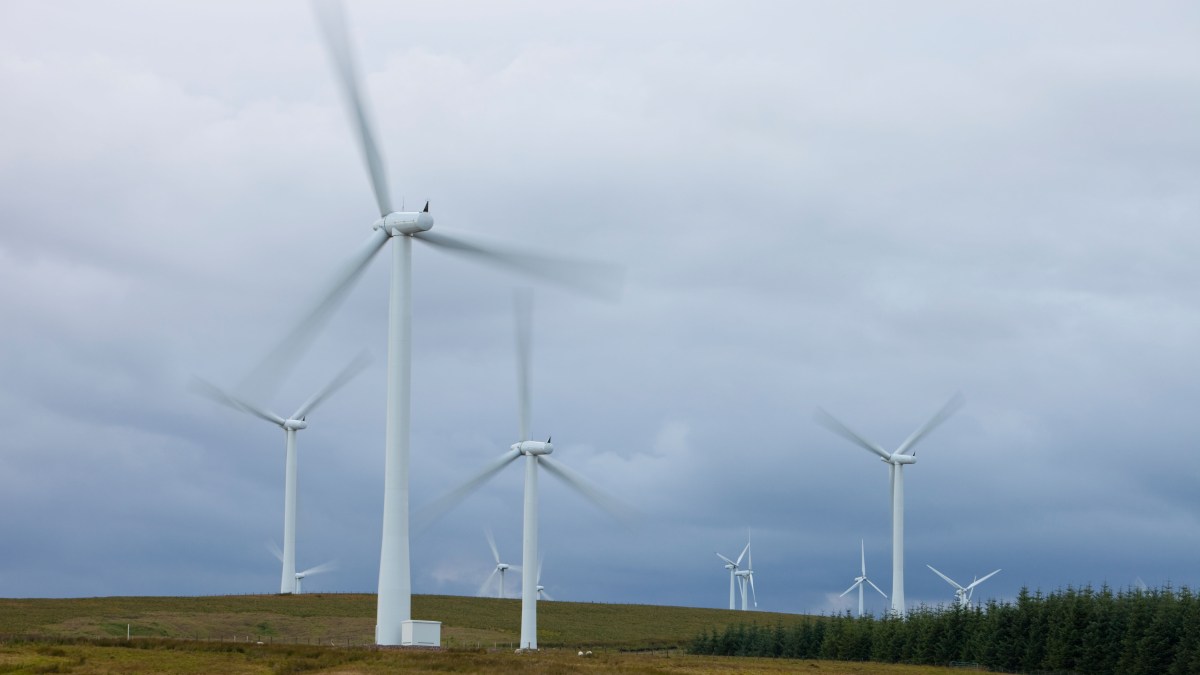
Wind turbine technology has reached a mature status during the past 15 years as a result of international commercial competition, mass production and continuing technical success in research and development (R&D). The earlier concerns that wind turbines were expensive and unreliable have largely been allayed. Wind energy project costs have declined and wind turbine technical availability is now consistently above 97%. Wind energy project plant capacity factors have also improved from 15% to over 30% today, for sites with a good wind regime (Rangi et al., 1992).
Modern wind energy systems operate automatically. The wind turbines depend on the same aerodynamic forces created by the wings of an aeroplane to cause rotation. An anemometer that continuously measures wind speed is part of most wind turbine control systems. When the wind speed is high enough to overcome friction in the wind turbine drivetrain, the controls allow the rotor to rotate, thus producing a very small amount of power. This cut-in wind speed is usually a gentle breeze of about 4 m/s. Power output increases rapidly as the wind speed rises. When output reaches the maximum power the machinery was designed for, the wind turbine controls govern the output to the rated power. The wind speed at which rated power is reached is called the rated wind speed of the turbine, and is usually a strong wind of about 15 m/s. Eventually, if the wind speed increases further, the control system shuts the wind turbine down to prevent damage to the machinery. This cut-out wind speed is usually around 25 m/s.
The major components of modern wind energy systems typically consist of the following:
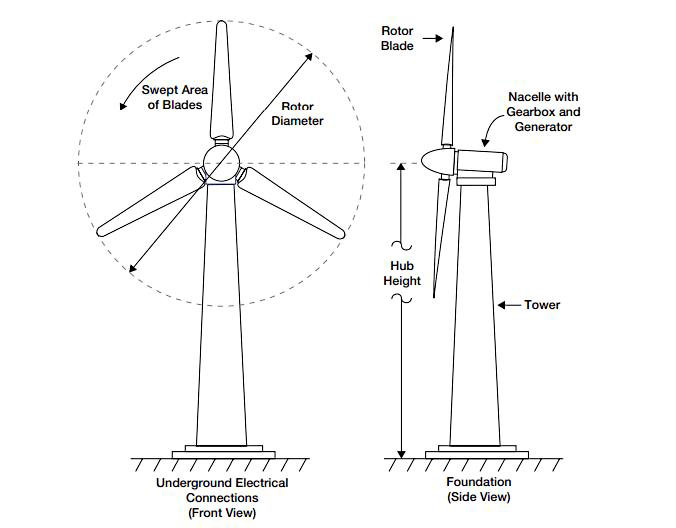
The picture illustrates the configuration of a typical “Horizontal Axis Wind Turbine” or HAWT wind energy system. A “Vertical Axis Wind Turbine” or VAWT is an equally viable alternative design, although it is not as common as the HAWT design in recent projects implemented around the world.
Wind turbines come in various sizes, from small units used for residential or small-scale applications to massive turbines used in wind farms to generate electricity for utilities. They are often installed in locations with consistent and strong winds, such as open plains, coastal areas, or offshore locations.
The electricity generated by wind turbines is considered a renewable energy source because wind is a naturally occurring and abundant resource. Wind power is an increasingly important component of the global energy mix as countries seek to reduce their reliance on fossil fuels and mitigate climate change.

Wind turbine technology has reached a mature status during the past 15 years as a result of international commercial competition, mass production and continuing technical success in research and development (R&D). The earlier concerns that wind turbines were expensive and unreliable have largely been allayed. Wind energy project costs have declined and wind turbine technical availability is now consistently above 97%. Wind energy project plant capacity factors have also improved from 15% to over 30% today, for sites with a good wind regime (Rangi et al., 1992).
Modern wind energy systems operate automatically. The wind turbines depend on the same aerodynamic forces created by the wings of an aeroplane to cause rotation. An anemometer that continuously measures wind speed is part of most wind turbine control systems. When the wind speed is high enough to overcome friction in the wind turbine drivetrain, the controls allow the rotor to rotate, thus producing a very small amount of power. This cut-in wind speed is usually a gentle breeze of about 4 m/s. Power output increases rapidly as the wind speed rises. When output reaches the maximum power the machinery was designed for, the wind turbine controls govern the output to the rated power. The wind speed at which rated power is reached is called the rated wind speed of the turbine, and is usually a strong wind of about 15 m/s. Eventually, if the wind speed increases further, the control system shuts the wind turbine down to prevent damage to the machinery. This cut-out wind speed is usually around 25 m/s.
The major components of modern wind energy systems typically consist of the following:
- Rotor, with 2 or 3 blades, which converts the energy in the wind into mechanical energy onto the rotor shaft;
- Gearbox to match the slowly turning rotor shaft to the electric generator;
- Tall tower which supports the rotor high above the ground to capture the higher wind speeds;
- Solid foundation to prevent the wind turbine from blowing over in high winds and/or icing conditions (CanWEA, 1996);
- Control system to start and stop the wind turbine and to monitor proper operation of the machinery
Types of Wind Turbines
There are two variations of the wind turbine design: horizontalaxis turbines and vertical-axis turbines. Horizontal-axis turbines have characteristics similar to the propeller of an airplane and are the most common wind machine used. Vertical-axis turbines have blades that connect at the top and the bottom of a vertical rotor. These machines look more like an egg beater or whisk. Horizontal-axis turbines are more often utilized in large wind farms as more electricity can be produced from a given amount of wind. Vertical-axis turbines are more likely to be used in residential applications or smaller wind farms as they perform well in tumultuous conditions and are ideal for sites without consistent wind patterns or where turbines cannot be placed high enough for steady winds.
There are two variations of the wind turbine design: horizontalaxis turbines and vertical-axis turbines. Horizontal-axis turbines have characteristics similar to the propeller of an airplane and are the most common wind machine used. Vertical-axis turbines have blades that connect at the top and the bottom of a vertical rotor. These machines look more like an egg beater or whisk. Horizontal-axis turbines are more often utilized in large wind farms as more electricity can be produced from a given amount of wind. Vertical-axis turbines are more likely to be used in residential applications or smaller wind farms as they perform well in tumultuous conditions and are ideal for sites without consistent wind patterns or where turbines cannot be placed high enough for steady winds.

The picture illustrates the configuration of a typical “Horizontal Axis Wind Turbine” or HAWT wind energy system. A “Vertical Axis Wind Turbine” or VAWT is an equally viable alternative design, although it is not as common as the HAWT design in recent projects implemented around the world.
Post a Comment:
You may also like:

Featured Articles
Horizontal Axis vs. Vertical Axis
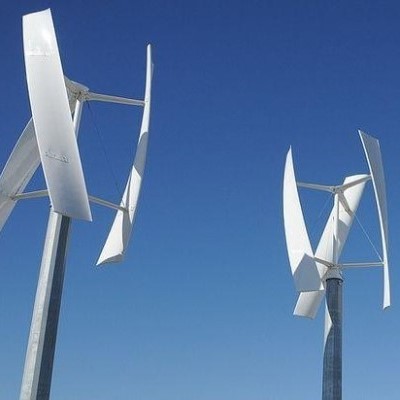 Wind turbines are machines that generate electricity from the kinetic energy of the wind. In history, they were more ...
Wind turbines are machines that generate electricity from the kinetic energy of the wind. In history, they were more ...
 Wind turbines are machines that generate electricity from the kinetic energy of the wind. In history, they were more ...
Wind turbines are machines that generate electricity from the kinetic energy of the wind. In history, they were more ...Wind Turbine Glossary
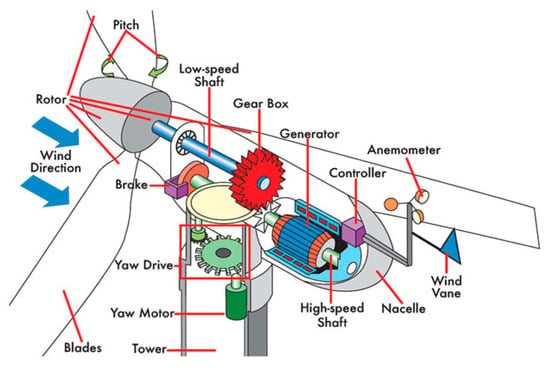 Wind energy is the kinetic energy that is present in moving air. The amount of potential energy depends mainly on wind speed, but ...
Wind energy is the kinetic energy that is present in moving air. The amount of potential energy depends mainly on wind speed, but ...
 Wind energy is the kinetic energy that is present in moving air. The amount of potential energy depends mainly on wind speed, but ...
Wind energy is the kinetic energy that is present in moving air. The amount of potential energy depends mainly on wind speed, but ...Household Wind Energy System Components
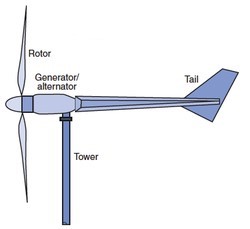 Basic parts of home wind energy systems generally comprise a rotor, a generator or alternator mounted on a frame, a tail ...
Basic parts of home wind energy systems generally comprise a rotor, a generator or alternator mounted on a frame, a tail ...
 Basic parts of home wind energy systems generally comprise a rotor, a generator or alternator mounted on a frame, a tail ...
Basic parts of home wind energy systems generally comprise a rotor, a generator or alternator mounted on a frame, a tail ...Horizontal Axis Wind Turbine Design
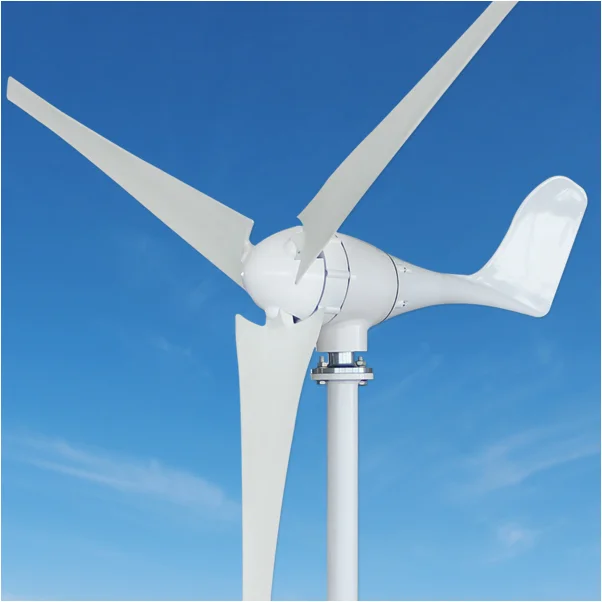 Today, the most common design of wind turbine is the horizontal axis wind turbine (HAWT). That is, the axis of rotation is ...
Today, the most common design of wind turbine is the horizontal axis wind turbine (HAWT). That is, the axis of rotation is ...
 Today, the most common design of wind turbine is the horizontal axis wind turbine (HAWT). That is, the axis of rotation is ...
Today, the most common design of wind turbine is the horizontal axis wind turbine (HAWT). That is, the axis of rotation is ...Overvoltage Protection for Wind ...
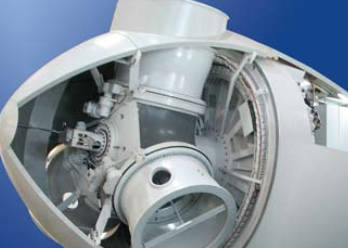 Due to their principle of operation, wind turbines have to be set up outdoors and are used in a wide range of ...
Due to their principle of operation, wind turbines have to be set up outdoors and are used in a wide range of ...
 Due to their principle of operation, wind turbines have to be set up outdoors and are used in a wide range of ...
Due to their principle of operation, wind turbines have to be set up outdoors and are used in a wide range of ...